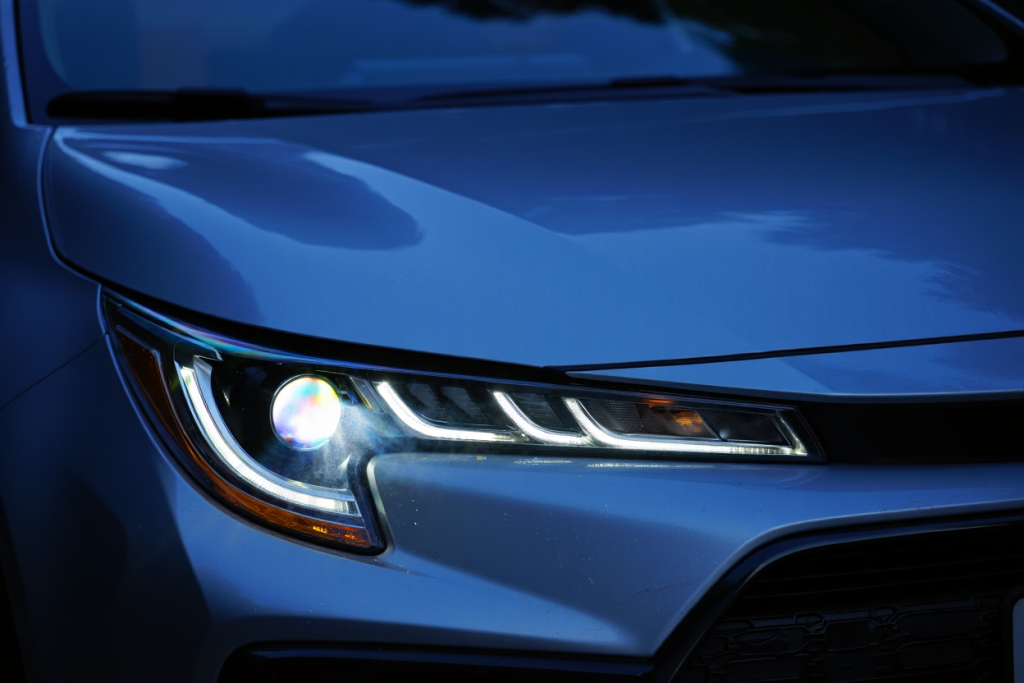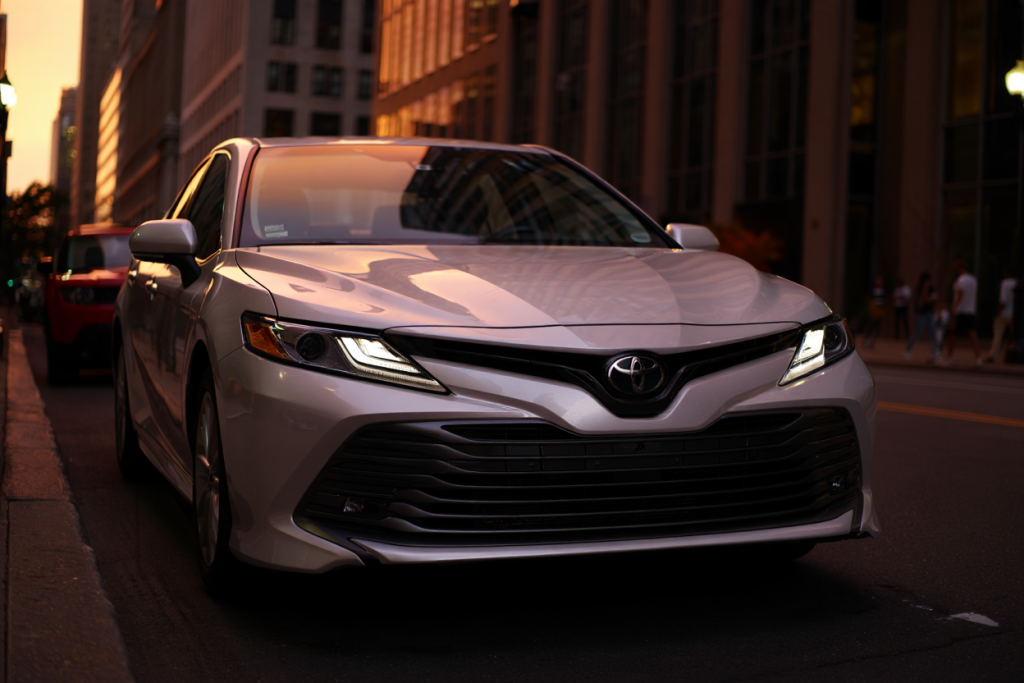Headlights and taillights are essential safety features on your Toyota Corolla. They ensure visibility at night, in bad weather, and signal your intentions to other drivers. Worn or malfunctioning lights can compromise safety, increase the risk of accidents, and even result in traffic tickets.
Knowing when to replace your headlights or taillights can save money, prevent accidents, and maintain your Corolla’s roadworthiness. In this article, I’ll cover five signs indicating it’s time for replacement, maintenance tips, cost considerations, and how to choose the best replacement bulbs.
Why Headlights and Taillights Matter?
Headlights and taillights are more than just illumination—they are critical for safe driving.
Function of Headlights
- Illuminate the road ahead at night or in poor weather
- Improve reaction time for unexpected obstacles
- Reduce eye strain while driving in low-light conditions
Function of Taillights
- Alert drivers behind you when braking or turning
- Provide visibility during night driving and poor weather
- Prevent rear-end collisions
Regular inspection ensures both headlights and taillights perform reliably.
Sign 1: Dim or Fading Light
One of the first signs that it’s time to replace your Corolla’s lights is a noticeable drop in brightness.
Causes of Dim Lights
- Old or worn-out bulbs
- Dirty or oxidized lens
- Electrical issues, such as corroded connectors
How It Affects Driving
Dim headlights reduce nighttime visibility, while dim taillights make it harder for other drivers to see you, increasing the risk of accidents.
Inspection Tip
- Observe your lights in a dark area or garage.
- Compare brightness to a newer bulb or another car of the same model.
Sign 2: Flickering or Intermittent Lighting
Flickering lights are a clear warning sign of underlying problems.
Causes of Flickering
- Loose bulb or socket connections
- Voltage fluctuations or alternator issues
- Water intrusion in the headlight or taillight housing
How It Affects Driving
Flickering headlights reduce road visibility, while flickering taillights confuse other drivers, compromising safety.
Inspection Tip
- Turn on all lights and look for flickering at both low and high beam.
- Check wiring connections for corrosion or looseness.
Sign 3: Cracked, Clouded, or Damaged Lenses
Physical damage to the lens reduces light output and may allow moisture inside.
Causes of Lens Damage
- Impact from stones or minor accidents
- UV exposure causing cloudiness or yellowing
- Water intrusion due to cracks or worn seals
How It Affects Driving
- Reduces light clarity and coverage
- Can cause glare for other drivers
- Moisture inside the housing may damage the bulb
Inspection Tip
- Examine headlights and taillights for cracks, clouding, or fogging.
- Any visible damage is a sign replacement or restoration is needed.
Sign 4: Burned-Out or Non-Working Bulb
Sometimes, lights simply stop working due to a burnt-out bulb.
Causes of Bulb Failure
- Old age (typical lifespan for halogen: 450–1,000 hours)
- Overheating or electrical surges
- Manufacturing defects in aftermarket bulbs
How It Affects Driving
Non-functional headlights reduce visibility at night, while non-working taillights compromise signaling to other drivers, increasing accident risk.
Inspection Tip
- Test all lights regularly, including brake, reverse, and turn signals.
- Replace immediately if a bulb is burnt out.
Sign 5: Water or Moisture Inside the Light Housing
Moisture inside the housing is a silent but serious problem.
Causes of Moisture Accumulation
- Broken seals or gaskets
- Cracks in the lens or housing
- Condensation from temperature changes
How It Affects Driving
- Reduces light intensity
- May cause flickering or short-circuiting
- Accelerates corrosion and bulb failure
Inspection Tip
- Look for fogging or visible water inside the lens.
- Replace or reseal the housing to prevent further issues.
How to Replace Headlights and Taillights on a Corolla?

Replacing your Corolla’s bulbs is generally straightforward.
Step 1: Choose the Correct Bulb
- Consult your owner’s manual for the exact bulb type (halogen, LED, or HID).
- Consider OEM or high-quality aftermarket options for durability.
Step 2: Access the Housing
- Open the hood or trunk and locate the light assembly.
- Remove the cover or screws as necessary.
Step 3: Remove and Replace Bulbs
- Disconnect the wiring harness carefully.
- Remove the old bulb, avoid touching the glass with bare hands (for halogens).
- Insert the new bulb, secure, and reconnect the wiring.
Step 4: Test Functionality
- Turn on headlights, taillights, brake lights, and turn signals to ensure proper operation.
- Adjust beam alignment if needed to prevent glare.
Maintenance Tips for Long-Lasting Lights
Clean the Lenses Regularly
- Use mild soap and water to remove dirt, salt, and debris.
- Avoid abrasive materials that can scratch or cloud the lens.
Inspect Bulbs Periodically
- Check all lights monthly or before long trips.
- Replace bulbs showing dimming or discoloration.
Protect Against UV and Moisture
- Apply UV-protective coatings for clear lenses.
- Replace worn gaskets or seals to prevent water intrusion.
Upgrade to Longer-Lasting Options
- Consider LED bulbs for longer lifespan and brighter light.
- OEM or high-quality aftermarket bulbs provide better performance and safety.
Cost Considerations
Replacing headlights or taillights varies depending on the type and brand.
Typical Costs
- Halogen bulbs: $15–$30 per bulb
- LED bulbs: $50–$150 per bulb
- HID bulbs: $100–$300 per bulb plus ballast (if applicable)
Labor Costs
- DIY replacement is possible for most Corolla models
- Professional installation may cost $50–$100 depending on complexity
Long-Term Considerations
- Investing in high-quality bulbs reduces frequent replacements
- Regular maintenance prevents expensive housing or lens damage
Conclusion
Headlights and taillights are critical for your Corolla’s safety. Dim, flickering, cracked, or moist lights are clear signs they need replacement. Regular inspection, cleaning, and proper bulb replacement ensure optimal performance, longer lifespan, and safer driving.
Check your Corolla’s headlights and taillights today and replace worn or damaged bulbs with OEM or high-quality aftermarket options to maintain visibility, signaling, and safety on every drive.
FAQs
- How often should I check my Corolla’s lights?
Check all headlights, taillights, brake lights, and turn signals at least once a month or before long trips. Regular inspections prevent unexpected failures and maintain safety. - Can I replace burned-out bulbs myself?
Yes, most Corolla bulbs are user-replaceable with basic tools. Follow the owner’s manual instructions and avoid touching halogen bulbs directly with your hands. - Are LED bulbs better than halogen for Corolla lights?
LED bulbs last longer, consume less power, and provide brighter light. Halogen bulbs are more affordable but have a shorter lifespan and lower brightness. - What should I do if my light housing has moisture inside?
Inspect seals and gaskets for damage. Remove the bulb, dry the housing, and reseal or replace damaged parts. Moisture can reduce brightness and cause bulb failure. - Can damaged lights cause a traffic ticket?
Yes. Non-functional headlights, taillights, or turn signals can result in traffic fines. Regular inspection and timely replacement keep your Corolla road-legal and safe.

Benjamin Grey is an automotive engineer and writer at Car Parts Advisor. With years of experience in the automotive industry, he shares expert advice on car parts, maintenance, and repairs to help car owners keep their vehicles running smoothly.





